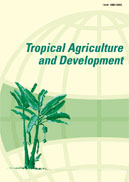65 巻, 4 号
選択された号の論文の5件中1~5を表示しています
- |<
- <
- 1
- >
- >|
Original Article
-
2021 年 65 巻 4 号 p. 169-176
発行日: 2021年
公開日: 2022/06/03
PDF形式でダウンロード (453K) -
2021 年 65 巻 4 号 p. 177-184
発行日: 2021年
公開日: 2022/06/03
PDF形式でダウンロード (193K) -
2021 年 65 巻 4 号 p. 185-194
発行日: 2021年
公開日: 2022/06/03
PDF形式でダウンロード (639K) -
2021 年 65 巻 4 号 p. 195-205
発行日: 2021年
公開日: 2022/06/03
PDF形式でダウンロード (295K) -
2021 年 65 巻 4 号 p. 206-215
発行日: 2021年
公開日: 2022/06/03
PDF形式でダウンロード (543K)
- |<
- <
- 1
- >
- >|
